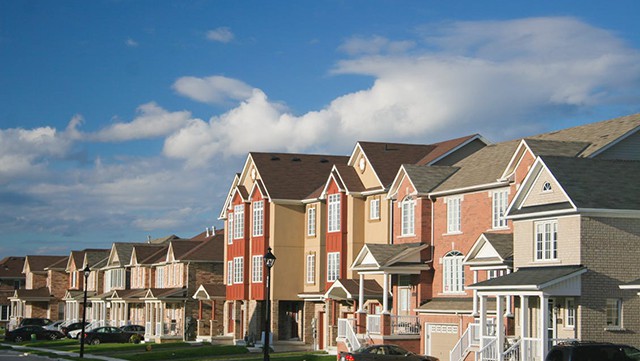Here’s How Hard it is to Buy a House in Halton Compared to Other Cities
Published November 30, 2018 at 4:51 pm

Most people know that homes are expensive in Oakville, Burlington, Milton and surrounding cities, but not everyone realizes that a city that’s known for expensive housing might not actually boast o
Most people know that homes are expensive in Oakville, Burlington, Milton and surrounding cities, but not everyone realizes that a city that’s known for expensive housing might not actually boast one of Ontario’s tougher markets.
Zoocasa, a national real estate brokerage, recently released a report that breaks down whether or not Halton–along with a host of other cities–qualifies as either a buyers’ or sellers’ market.
In Oakville, Burlington and Milton, the markets are surprisingly balanced (meaning they’re more friendly to buyers, high price points aside), but not every city is as hospitable to buyers as it is to sellers.
So, what is a sellers’ market?
“Describing a neighbourhood, city or region as such typically calls to mind open house lineups, hot bidding wars, and homes selling for hundreds of thousands of dollars higher than their listing price,” says Penelope Graham, managing editor, Zoocasa, in the report.
“However, classifying an area as sellers’ territory doesn’t necessarily mean it’s an expensive market – just as a buyers’ market doesn’t always indicate affordable home prices. Rather, whether a housing market can be considered within a buyers’, sellers’ or balanced range comes down to one important metric: the sales-to-new-listings ratio (SNLR).”
Graham says the SNLR is calculated by dividing the number of sales by the number of new listings within a specific housing market over a period of time.
The SNLR reveals how many of the homes listed for sale are selling within that time frame, and shows how competitive the market is for buyers and sellers.
According to the Canadian Real Estate Association (CREA), an SNLR between 40 – 60 per cent is considered a balanced market (Oakville sits at 46 per cent, Burlington at 60 per cent and Milton at 58 per cent), with below and above that threshold indicating buyers’ and sellers’ conditions, respectively.
You can see which markets fall under each category in the graphic below:
Buyers should note that while the SNLR doesn’t always reflect how affordable a market is, it can offer valuable hints on how a market has changed over time. It will also let them know whether or not it’s a good time to sell or purchase a home.
Zoocasa also points out that it can also be symptomatic of larger trends influencing the market. As some people might recall, Toronto became favourable to buyers immediately following the implementation of the Liberal government’s Fair Housing Plan (which prompted sellers to list and flooded the market with inventory).
Zoocasa says that market is now balanced, with a ratio of 57 per cent.
“A tight sellers’ market, however, may indicate a high level of demand for a specific neighbourhood, a lower level of inventory, or simply reflect an area where homes don’t often come up for sale,” Graham says.
Believe it or not, the market is pretty balanced across Ontario, with an SNLR of 56 per cent, according to CREA’s October report.
“However, this varies widely in markets across the province; recent data compiled by Zoocasa finds that, depending on their location, market price point, and local inventory, Ontarians face little, to very steep, competition when buying a home,” Graham says.
Zoocasa says buyers face the toughest conditions in markets where the average price point is lowest (think around $500,000). Zoocasa says that Thunder Bay, where the average home cost $225,945 in October, boasts one of the steepest sellers’ markets in the province with an SNLR of 90 per cent, as 205 of 227 newly listed homes sold within the month.
Zoocasa says the London, Ontario real estate and Kitchener real estate markets were also notable sellers’ markets, given the relatively lower price points.
Interestingly enough, it’s easier to be a buyer in pricier markets.
Zoocasa says that in markets where the average house price sits above $500,000, only three of 18 municipalities can be considered sellers’ markets.
Orangeville, where the average home price is $561,295 is actually the tightest sellers’ market in Ontario with an SNLR of 102 per cent, with 57 home sales and only 56 new listings. That’s followed by Guelph at 68 per cent, even though sales and new listings have both softened year over year.
Hamilton-Burlington is on the edge of balanced territory at 60 per cent; with a relatively low home price of $561,898, it continues to be a popular draw for real estate buyers from surrounding expensive markets.
Balanced conditions also prevail in Mississauga and Milton, despite higher average home prices above the $600,000-mark.
Do you plan on buying a home in Halton this year?
insauga's Editorial Standards and Policies advertising





